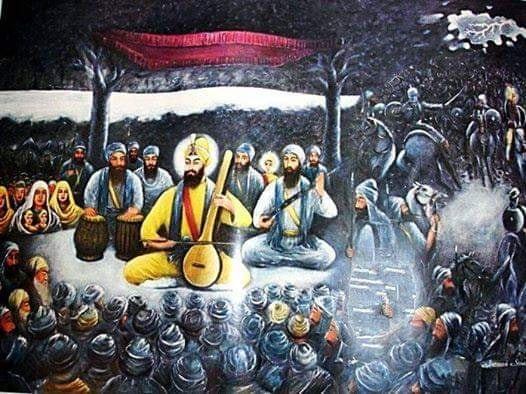BELA SINGH, BHAI (1865-1921), son of Bhai Mayya and Mai Raji, a Saini Sikh couple, was born at Kartarpur in Jalandhar district. The family originally belonged to Faridkot state, from where Bela Singh`s grandfather, Bhai Sobha, had migrated to Kartarpur where he served in Guru ka Larigar run by local mahants, who in recognition of his services had allotted some agricultural land to him. Bela Singh was the first in the family to receive the Khalsa paau. He engaged himself in agriculture but also continued to serve in Guru ka Langar.
BIDAR (17° 55`N, 77° 32`E) is a district town in Karnataka. It is a railway station on the VikarabadParliVaijnath section of the South Central Railway. It is also connected by road with Nanded. GURDWARA SRi NANAK JHiRA SAHIB at Bidar honours the memory of Guru Nanak. At the time of Guru Nanak`s visit, Bidar was the capital of the Bahmani kingdom. Since the establishment in the town of the great Madarsa by Mahmud Gawari in 1471-72, it had been a famous centre of Arabic learning in the Deccan.
BUR SINGH, BHAI (1896-1921), son of Bhai Mal Singh Kamboj and Mai As Kaur, of Chakk No. 80 Mula Singhvala, district Sheikhupura, was born on 10 Phagun 1952 Bk/22 February 1896. His parents originally belonged to village Bahoru in Amritsar district and had settled in the newly developed canal colony in western Punjab, Chakk No. 80, only in 1892. Bur Singh received elementary education in the village school and gurdwara.
CHAKK FATEH SINGHVALA. 3 km south of Bhuchcho Mandi (30° 13`N, 75° 5`E) in Bathinda district of the Punjab, and one of the cluster of villages known as Bhai ke Chakk because of the association of the family of Bhai Bhagatu with them, was visited by Guru Gobind Singh, on his way from Talvandi Sabo to Bathinda. ISJeth 1763 Bk / 16 May 1706 is preserved in local tradition as the date of Guru Gobind Singh`s arrival in the village where he put up for a week. The main shrine, Gurdwara Sri Guru Gobind Singh Ji Sahib, a 4metre square domed sanctum on a high plinth, is on the eastern outskirts of the village, with a small sarovar or holy tank in the vicinity.










